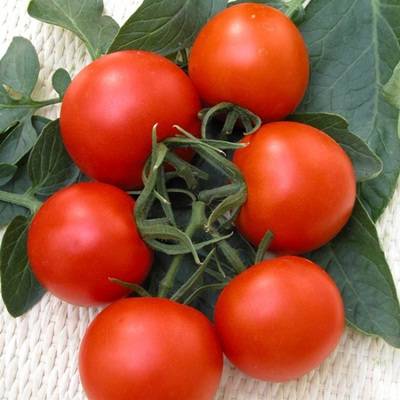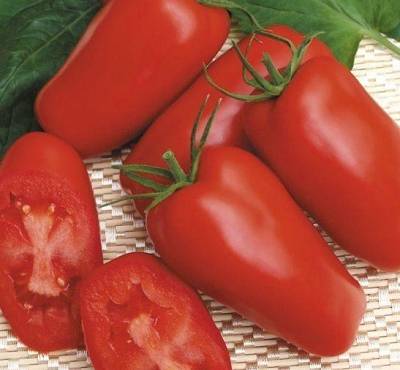While scientists around the world are wondering what awaits us in the future: global warming to unimaginable temperatures or no less global glaciation due to the change in its flow due to melted Gulf Stream ice, the flora and fauna of the Earth are forced to adapt to the annual “abnormally hot” summer weather. People are no exception. But if city dwellers can close themselves in offices and apartments with air conditioning, then gardeners have to not only work in the beds under the scorching sun, but also select varieties of vegetables that can withstand such temperatures.
Most varieties of tomatoes, including foreign high-yielding hybrids, are not able to withstand high air temperatures. They typically grow at lower temperatures with little daily variation.
Previously, heat-resistant tomato varieties were of interest only to summer residents of the southern regions, where the air temperature could sometimes exceed 35°C, and even higher in the sun. Today, even residents of the Middle Zone are forced to plant these same varieties.
But at this temperature, varieties and hybrids from the Gavrish company show good formation of ovaries.
In the case of a very dry and hot summer, when drought and stuffiness are added to the hot air, tomatoes become sick with blossom end rot, the leaves curl and fall off. If the difference between night and day temperatures is too large, the fruits crack near the stalk. These tomatoes rot on the vine. Even if they manage to ripen, they are no longer suitable for preservation and storage. Hybrids from the companies “Gavrish”, “SeDeK”, “Ilyinichna”, “Aelita” are able to withstand such conditions and produce a harvest. Heat above 34 degrees for a long time leads to burns of fruits and leaves, as well as surface roots of tomato bushes.
Tomato varieties specially bred for the southern regions can counter this problem. For example, “Gazpacho” from the company Gavrish.
You should immediately decide on the terminology. “Drought-tolerant,” “heat-tolerant,” and “heat-resistant” are not synonymous when applied to plants. Drought resistance does not necessarily imply heat resistance. In the absence of rain, the air temperature may well be quite low and not exceed 25-30°C. And a heat-resistant plant that can easily tolerate heat below 40° can be very sensitive to the lack of water in the soil. The concept of “heat resistance” has nothing to do with living organisms at all. It is used to determine the ability of the materials from which structures are made to operate at elevated temperatures without noticeable deformation. Steel can be heat resistant, but not living wood.
Heat-resistant domestic varieties of tomatoes
Indeterminate tomatoes
Variety "Babylon F1"
New mid-season heat-resistant hybrid.A tall bush with medium-sized dark green foliage. Up to 6 ovaries are formed on the hand.
Tomatoes are red, round, weighing up to 180g. When unripe, they have a dark green spot near the stalk.
The variety is resistant to nematodes and pathogenic microflora. The fruits have good transportability.
Variety "Alcazar F1"
One of the best hybrids from the Gavrish company. The variety is indeterminate with a powerful root system, thanks to which the top of the stem does not thin out when it is loaded with tomatoes. It has proven itself well when grown in greenhouse conditions. The main method of cultivation is hydroponic, but the variety also bears fruit well when grown in soil.
The variety is mid-early, the growing season is 115 days. The bush belongs to the “vegetative” type with large dark green foliage. The stem grows actively throughout the growing season. The variety tolerates summer heat well. Stably forms ovaries both in winter with a lack of lighting and in hot summer.
Tomatoes are round, uniform in size, weight up to 150 g.
Resistant to tomato cracking and blossom end rot at the genetic level. Resistant to pathogenic microflora.
Variety "Chelbas F1"
One of the best varieties from the Gavrish company. A mid-early tomato with a growing season of 115 days. The bush is indeterminate, heavily leafy. Recommended for growing in greenhouses in summer-autumn and for growing in winter-spring.
A cluster usually holds up to 7 tomatoes weighing up to 130 g. The fruits can be stored for up to 40 days, withstanding long-distance transportation.
It forms ovaries well in any conditions, resistance to heat allows this variety to be grown not only in the south of Russia, but also in hotter regions up to Egypt and Iran.
In addition to resistance to pathogenic microflora, the variety is immune to yellow leaf curl. Grows well in root-knot nematode-infested soil. All this allows you to obtain good yields of this hybrid in almost any conditions.
Variety "Fantomas F1"
Indeterminate medium-leaved variety, recommended for cultivation in the Middle Zone in greenhouses. The branching of the bush is average. Medium sized foliage. The height of the bush and the size of the tomatoes are also average. It would be a stable average if it weren’t for the yield (up to 38 kg/m²) and the yield of marketable products amounting to 97%.
Tomato weighing about 114 g. Maximum size 150 g. Spherical, smooth.
The variety is resistant to fungal diseases.
Not all gardeners can install a high greenhouse on their plot for growing indeterminate varieties of tomatoes. In low greenhouses, such varieties, growing up to the ceiling, stop growing and bearing fruit. This problem can be avoided by lowering the stem of an indeterminate tomato.
Determinate tomatoes
Variety "Ramses F1"
Designed for cultivation under film in private farms. Manufacturer: agricultural company "Ilyinichna". Bush determinant with a growing season of 110 days.
The tomatoes are round, slightly tapered at the bottom. Dense, red when ripe. The weight of one tomato is 140 g. The ovaries are collected in brushes, of which there are up to 4 on each bush. Productivity up to 13 kg per square meter.
Resistant to pathogenic microorganisms.
Variety "Portland F1"
Mid-early hybrid from "Gavrish", bred in 1995. Determinate bush, up to one and a half meters high. The growing season is 110 days. It is distinguished by high productivity and friendly ripening of tomatoes.Up to 5 kg are harvested from one bush at a planting density of 3 bushes per meter.
The fruits are round, smooth, weighing up to 110 g. Recommended for canned whole fruits and salads.
The variety is distinguished by its ability to form ovaries well under sudden changes in air temperature and high humidity. The stepsons are removed, forming a bush into one stem. Resistant to pathogenic microflora.
Variety "Verlioka plus F1"
High-yielding early ripening hybrid with smooth fruit ripening. A determinate bush can grow up to 180 cm, requiring staking if it grows too tall. Form a bush into one stem. Up to 10 ovaries are formed on the inflorescence racemes.
Tomatoes weighing up to 130 g, round. The purpose of the variety is universal. Thin but dense skin protects tomatoes from cracking.
The variety is resistant to short-term drought and sudden changes in daily temperatures. Resistant to the most common nightshade diseases.
Disinfection is not required, but it is recommended to treat the seeds with a growth stimulant 12 hours before sowing.
Variety "Gazpacho"
A mid-late yielding variety from the Gavrish company, intended for open beds. Tomatoes take 4 months to ripen. The bush is determinate, medium-covered, up to 40 cm high. The yield is up to 5 kg per unit area.
The tomatoes are elongated, uniformly red in color when ripe, weighing up to 80 g. The fruits do not fall off when ripe, being firmly held on the hand.
A variety for universal use. Resistant not only to heat, but also to major fungal diseases and nematodes.
Since the main purpose of the variety is cultivation in open ground, under these conditions the bush is pruned moderately. When grown in a greenhouse, the growth point is transferred to a side shoot that grows under the last brush, forming a bush with one stem. The variety is planted according to a 0.4x0.6 m pattern.
The variety needs regular watering and plenty of sunlight, as well as mineral fertilizers.
Types of Heat Tolerant Tomatoes
Tomatoes are divided into two types based on their ability to withstand heat: vegetative and generative.
Vegetative bushes are heavily leafed and have numerous stepsons. Normally, such bushes are planted no more than 3 per square meter, be sure to remove the stepsons. When the shoots grow more than 10 cm, no more than 60% of the norm will bear fruit on the bunches of this type of tomato. But it is precisely these varieties that can provide the gardener with a harvest in hot weather and low humidity levels. Even with leaves curling and scorching, the foliage area is sufficient to protect most tomatoes from the sun.
The generative type of tomatoes has small foliage and few stepsons. Such varieties are good for northern regions, where their fruits can receive enough sun to ripen. But the abnormally hot summer of the last few years has played a cruel joke on them. Fruits not protected by “burnt” leaves do not ripen, although the ovaries initially promise a good harvest. The non-ripening of fruits is due to the small amount of the antioxidant lycopene in them, which is synthesized in the temperature range from 14 to 30°C. Without it, tomatoes do not turn red, remaining pale orange at best. Also, under such weather conditions, tomatoes develop blossom end rot.You need to plant generative tomatoes at least 4 per square meter, trying to preserve as much foliage as possible. Sometimes even by leaving a couple of leaves on the pinched stepsons.
But in case of an error, you can try to save the harvest. When the night temperature is not lower than 18°, water the tomatoes in the evening. Tomato bushes are shaded with non-woven material. If possible, place a two-color film on the beds, white side up, to retain moisture in the soil and reduce soil temperature.
When growing indeterminate tomatoes in a greenhouse you will need to open the greenhouse as much as possible. If it is possible to remove the side walls, then they should be removed. The windows also need to be opened and covered with non-woven material.
When choosing heat-resistant tomatoes, you can focus, if possible, on the appearance of the bush (whether the foliage protects the fruit) and the annotation of the manufacturer. Unfortunately, not all Russian companies consider it necessary to indicate on the packaging such an advantage of the variety as heat resistance. In this case, only experimental clarification of the qualities of tomatoes is possible.

















